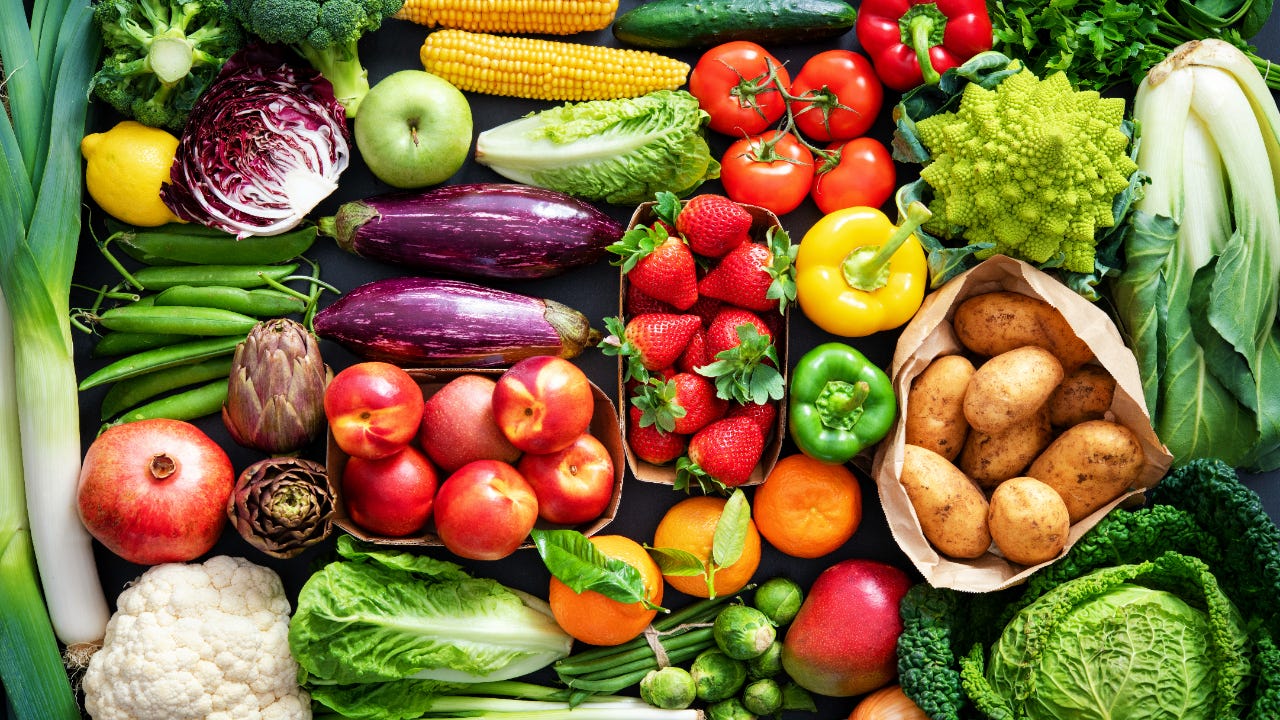18 ways to save money on groceries

Key takeaways
- Planning ahead can go a long way. Creating a shopping list and meal plan, researching the cheapest grocery stores in your area and joining rewards programs before you shop can help you save money.
- Buying items in bulk, on sale and in season can also provide some relief to your wallet.
Inflation has cooled significantly since 2022, but prices of essentials like groceries remain uncomfortably high for many Americans.
In fact, food prices were 2.5 percent higher in December 2024 than in December 2023. Grocery store or supermarket food purchases were 1.8 percent higher year-over-year, while prices of restaurant purchases jumped 3.6 percent.
Fortunately, with a little planning and preparation, there are ways to save money on your grocery bill.
1. Make a shopping list and meal plan
If you’ve ever walked into the grocery store with no list and ended up spending more money than you thought you would, you can appreciate the importance of planning ahead. Decide on the meals and snacks you’d like to have for the week, and create a list that only includes the necessary ingredients.
Sticking to the list can help you avoid impulse purchases. Create meal plans based on healthy items that are on sale and in-season.
Before creating your shopping list, be sure to “shop” your own pantry, fridge and freezer as well. This allows you to use items you already have.
2. Shop alone if you can
Impulse buying can be one of the costliest habits at the grocery store. Shopping with others may increase the likelihood you’ll buy something on a whim.
Rather than bringing your family members with you to the grocery store, add their requested items to your shopping list in advance so they’ll still get some of their favorite snacks without the risk of added impulse buys.
3. Shop during the quietest days of the week
Crowds can have a negative impact on your grocery budget. When you’re in a busy store, it can be more difficult to take a good look at the selection and find particular brands or sizes that are most cost effective.
It might take some trial and error to determine the slower times at the store, but once you’ve figured it out, stick with that time.
4. Swap ingredients for cheaper options
Consider swapping your meat choice or vegetable choice for one of the lower-cost options. Depending on your dish, you may be able to swap out a certain vegetable for one that is in-season and cheaper.
5. Buy generic products
There’s no denying that brand-name products are more expensive than their generic counterparts. While saving an extra $2 or $3 may not seem like much, saving a few extra bucks on 20 items can add up.
6. Avoid buying hygiene products at the grocery store
Many people buy household products at the grocery store without realizing how much they’re likely overpaying for those items. You can often find hygiene products for less at places like Walmart or Target.
7. Stick to the store’s perimeter
Generally, the aisles in the center of the supermarket contain processed foods, which tend to be pricey, whereas the outer walls are where you’ll often find things like fruits, vegetables and other unprocessed foods that can be more cost effective.
Doing most of your shopping around the perimeter of the store also means you’ll likely be planning healthier meals, which is an added bonus.
When avoiding items that’ll cost you more, also keep in mind the adage, “Eye level is buy level.” Since products at eye level are most likely to get your attention, retailers often place more expensive items on these shelves.
8. Pay with a grocery rewards card
Grocery rewards credit cards offer cash back or points on purchases at the supermarket. Getting a little bit back from each shopping trip will help offset the costs of inflation. However, it’s imperative to pay off your credit card bill in full each month to avoid paying interest on your balance as well.
9. Use a calculator while shopping
Pull out your phone while shopping to add up the cost of your groceries. This can be especially helpful if you’re sticking to a strict budget.
Keeping track of your ongoing tally can help when trying to decide whether to buy something that wasn’t originally on your list.
10. Shop the sales
Be sure to check your local newspaper circulars, store apps and a store’s website to know what’s on sale and when. It can pay to plan your menu based on what’s currently on sale.
Be careful not to buy things simply because they’re on sale, without adding them to your menu plan. However, it’s also worth noting items that may be marked down while you are shopping as well.
11. Join grocery store loyalty programs
Plenty of grocery stores have loyalty programs you can sign up for that will earn you points and send you coupons, often integrated into the store’s app. A lot of stores will also have discounts specifically for loyalty members as well.
12. Take advantage of curbside pickup
If you’re too tempted to overspend in the store, shop ahead on your store’s website or mobile app. Many stores let you choose between picking up your order curbside or having it delivered. You may find curbside pickup to be more cost-effective, since delivery fees can be expensive. Just be certain there is no additional charge for this service.
13. Buy items in bulk and freeze the extras
Some foods are significantly cheaper when purchased in bulk. So for foods that you are able to freeze, consider buying in large quantities and freeze what you don’t need right now.
This practice can be especially useful during certain sales. For instance, you may find a deal that applies when you purchase two loaves of bread. Rather than trying to use it all at once, freeze the spare for later. Wholesale clubs like Costco and Sam’s Club tend to offer lower prices for bulk items compared to what you’d get if you bought the same amount at regular grocery stores.
14. Shop on a full stomach
This is an age-old tip for grocery shopping. Going to a grocery store when you’re hungry could cause you to overspend. You may be more likely to grab groceries you don’t need and more impulse purchases.
15. Buy produce that is in season
Produce is more expensive when it’s out of season. Understand what produce is in season and when, so you can enjoy fruits and vegetables when they’re tastiest and cheapest.
16. Shop bulk bins
Don’t forget to make use of bulk bins if your grocery store features them. Bulk bins allow you to scoop into a bag the exact amount you need of things like grains or nuts. If you’re just buying a small amount, you’re also less likely to waste any.
17. Compare prices across stores
If you’re lucky enough to have multiple grocery stores near you, compare products and prices across the board and shop where you find the best deals. It might not make sense to do too much running around to get all of your groceries, but perhaps a couple different days of the week can be reserved for visiting a couple of different stores. Stores like Aldi, Walmart and Trader Joe’s, tend to have lower prices than other grocery stories — and again, don’t forget about wholesale clubs like Costco and Sam’s Club, which can get you more for your money.
18. Limit your shopping trips
The more time you spend at a grocery store, the more time you have for impulse buying. Determine how often you actually need to go to the grocery store and stick to the schedule. If your plan is to shop weekly but you realize you forgot an ingredient mid-week, don’t allow yourself to wander the aisles: Make the one purchase and head home.
Apps for grocery savings
In addition to the tips above, there are also many apps that can help reduce your grocery bill. You can often find grocery discounts and coupons or cash back via apps that help you save money on food. Some of these apps include:
- Ibotta
- Flipp
- Coupons.com
- Your store’s specific app
Reasons to spend less on groceries
If you keep a monthly budget, you’ll find that spending less on groceries frees up dollars for other areas to which you devote money. You can use that extra money to fund a savings account for an emergency fund and other saving goals.
Bottom line
A little advance preparation can go a long way when you’re looking to save money on groceries. It often starts with planning your meals and creating a shopping list. Knowing in advance exactly what you need to buy can save you from wasting money and food by purchasing items you ultimately won’t eat.







